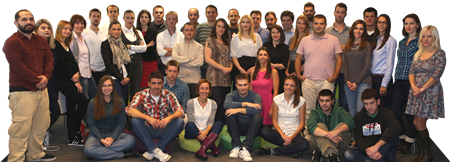THE CITY ASSEMBLED
| Cena: |
| Želi ovaj predmet: | 1 |
| Stanje: | Polovan bez oštećenja |
| Garancija: | Ne |
| Isporuka: | Pošta Post Express Lično preuzimanje Organizovani transport: 260 din |
| Plaćanje: | Tekući račun (pre slanja) PostNet (pre slanja) Lično |
| Grad: |
Smederevska Palanka, Smederevska Palanka |
ISBN: Ostalo
Godina izdanja: 1992.
Oblast: Arhitektura
Jezik: Engleski
Autor: Strani
Spiro Kostov THE CITY ASSEMBLED Elements of Urban Form
Veći četvrtasti format, 320 ilustrovanih strana.
Listovi sa donje strane (spolja) uprljani, unutra je lepo očuvana.
The City Assembled continues Kostof`s unique study of urban landscape and process that began in The City Shaped. Moving from the historical and cultural overviews of the city, Kostof descends into the streets, sidewalks, squares, markets, and waterfronts and presents a detailed urban anatomy. The book is organized thematically around the structural phenomena of cities -- the city edge, the street, public space, the marketplace, and the realities of cultural and economic segregation. It explores the customs, practicalities, and biases behind the elements of the city. The City Assembled is a fascinating account of the urban experience, written, like The City Shaped, for general and professional readers alike.
Spiro Kostof, the renowned architectural historian and chronicler of urban form, presents a universal history of the elements of cities: streets, public places, urban divisions, and the borders of city and countryside. This is both an independent study and a companion volume to Professor Kostof`s book `The City Shaped` which dealt with cities as complete entities. Now he follows the evolution of their components, and traces the story right up to the present, showing how the issues remain fresh and engage with our own day, often in unexpected ways. He also discusses `urban process`: the effect on cities of natural disasters (such as the Great Fire of London and the Lisbon earthquake), war and comprehensive redevelopment, compared with traditional patterns of incremental growth and change. This is at once an exercise in architectural and social history, a case-study for the present, and a pointer for the future.
k
Sva komunikacija se obavlja putem Kupindo poruka.
Pod `organizovanim transportom` smatram preporučenu tiskovinu ili paket (kada su kompleti i teže knjige).
Običnu tiskovinu ne šaljem jer nemam dokaz o slanju.
Novi cenovnik Pošte za preporučenu tiskovinu:
- 100g - 250g - 190 dinara
- 250g - 500g - 210 dinara
- 500g - 1kg - 230 dinara
- 1kg - 2kg - 270 dinara
Molim kupce iz inostranstva da me pre kupovine kontaktiraju porukom kako bismo se dogovorili oko uslova uplaćivanja i slanja.
Besplatna poštarina se ne odnosi na slanje u inostranstvo.
Pogledajte i ponudu na:
https://www.kupindo.com/pretraga.php?Grupa=1&Pretraga=&CeleReci=0&UNaslovu=0&Prodavac=anarh&Okrug=-1&Opstina=-1&CenaOd=&CenaDo=&submit=tra%C5%BEi
Ukoliko i tamo nešto pronađete, platićete preko istog računa i uštedeti na poštarini.
Predmet: 67669129











